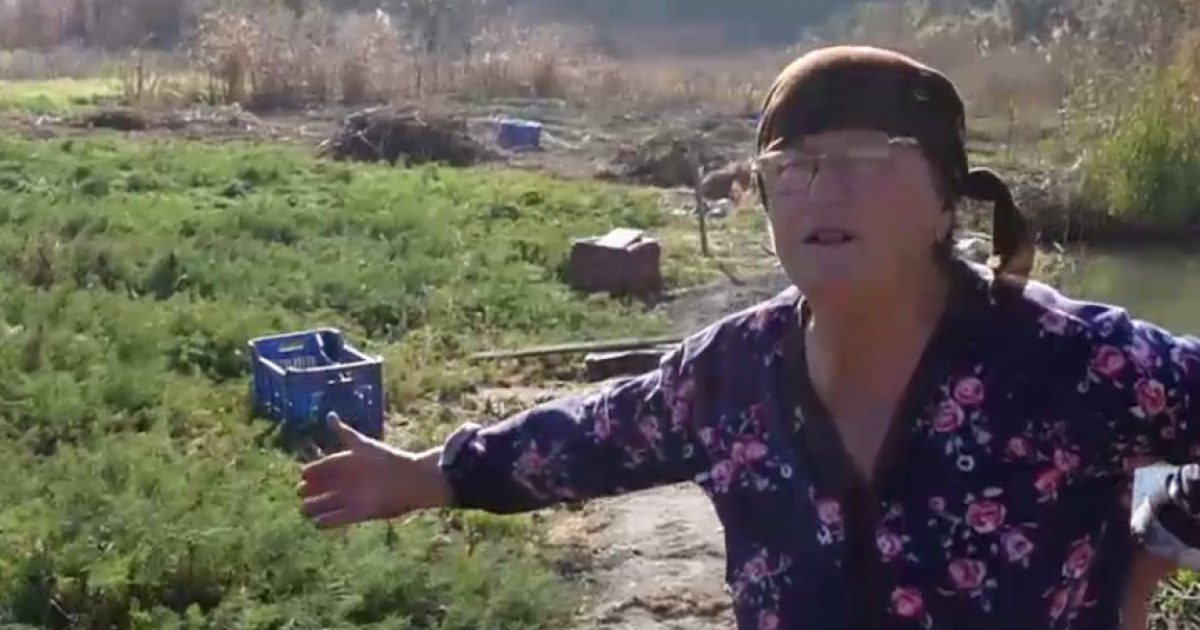“The head keeper Nils Lannerborg ran around with a loudspeaker and put people into the right booths. 200 porters were pushed forward. Nobody complained.”
“Pasan, Djurgår is poor and needs a hug,” said singer Mr. Harry Brandelius. He drowned in all the turmoil. Only a genius could decide when he moved from speech to song.”
So explained Svenska Dagbladet the hour-long queues outside Råsunda before the last round of the allsvenskan in 1959, when Djurgården won allsvenskan gold.
In recent years, audience interest in the Allsvenskan has increased and increased, and last year the average of the game reached more than 10,000 people, this year it will be higher. But we still haven’t reached the football fever of the late 40s to the late 60s, or the average attendance of 13,369 from the peak year in 1959.
“Allsvenskan, the series with charm”, was a full-page headline in Expressen in July 1950 before the first appearance of Allsvenskan.
The football series “has become one of the country’s most cherished treasures and one of its most reliable topics of discussion,” the paper wrote. “A relationship that no professional recruit in the t -world to do something about it.”
Four years ago broke three attendance records on the same day in three derbies, on 14 May 1954. At Ullevi in Gothenburg, at Olympia in Helsingborg and at Råsunda in Stockholm.
The Djurgården players had taken half a day off from work and gathered at Djurgården to relax and have a bite to eat. Because of the traffic chaos before the game, they had difficulty getting from there to Råsunda, DN wrote. The trunk with shoes and clothes also got stuck in traffic, but it finally arrived.
“So, the audience didn’t have to see Djurgården walking around barefoot in swimming trunks.
39,023 people saw AIK and Djurgården play 0–0.
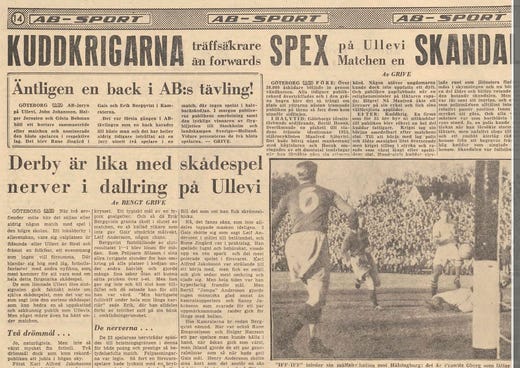
In Gothenburg, there was a pillow war at the same time, Bengt Grive reported for Aftonbladet. At Ullevi, where it was 1-1 between Gais and IFK Göteborg In front of 30,415 people, you could rent seat cushions for 35 öre. Right after the final whistle, people started throwing them at each other.
“At first, the police and the older congregation laughed a little, but the war grew in strength and was worse for a long time after the end of the playing period. “Hundreds of pillows would fly around like giant bats in the evening,” the paper wrote.
Just a policeman he tried to intervene, but they had to escape msgstr “The scandal was complete.”
As today, Allsvenskan was described in the 50s as a joy for everyone in society, regardless of occupation, class and gender. People could start queuing in the middle of the night for tickets.
It brought a lot of income, but in Sweden it was not allowed to pay players. Stars disappeared as professionals to Italy.
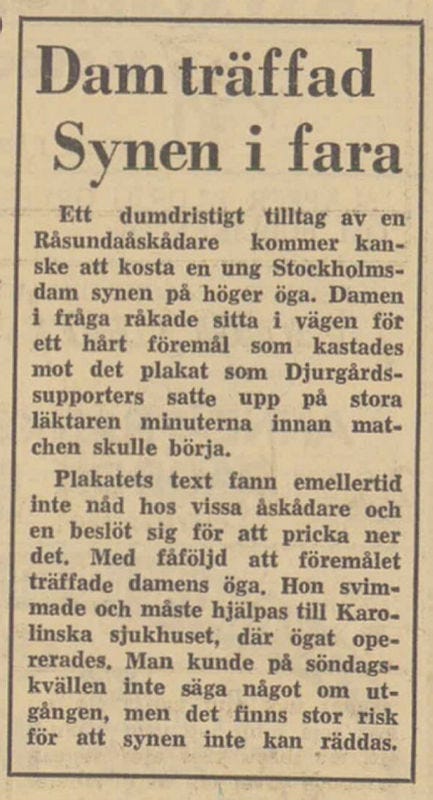
“The fight for the audience and the money means that major football ‘automatically’ takes on a full or semi-professional character, facts that you should not turn a blind eye to to turn,” wrote Expressen’s Bertil Jansson in a column.
Most the audience team It was Örgryte, who broke the Swedish audience record at the time even in the qualifiers for Allsvenskan, against Landskrona Bois in 1958.
That year the WC was also played in Sweden. The Allsvenskan’s biggest audience year came in 1959 after the tournament, it was also the first after the season changed to be played from spring to autumn.
Öi’s average total home and away crowd of 22,486 from 1959 remains a Swedish record, and the highest attendance at an Allsvenskan game remains since June 3, 1959, when Ullevi had 52,194 and saw Örgryte beat IFK Gothenburg 3–0.
Many of them maybe he wanted to see WC hero Gunnar Gren, who was playing coach for Öis, but he had a stomach ulcer, which he himself thought was because his wife gave birth, he told DN.
– Such stories stressed me mentally, especially since my wife has not been very careful.
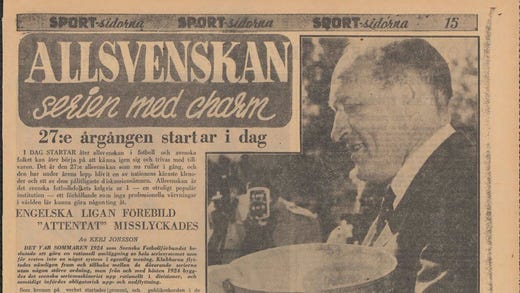
It was the vice-president of the opposing club, Gösta Karlsson, who also happened to be a doctor, who made the diagnosis.
The return meeting between the teams was the first sight of electric lights in Swedish football. Starting at 19:00, 46,294 people saw the historic event on August 20 in Ullevi.
The players had to nothing to complain, but the public was not completely satisfied, wrote Aftonbladet. Especially not the first part of the “light half” when “daylight broke in a way that made fast conditions and attacks impossible to see”.
“Gren’s order broke IFK’s fish lyre”, otherwise Aftonbladet headlined. Gunnar Gren had whispered in star Agne Simonsson’s ear to take it easy when Öis led 1–0, and it was controversial .
“Örgryte is digging the grave of Swedish football”, wrote Arbetet in big letters.
That was at putting himself on the defensive to protect his leadership was not naturally accepted.
– Imagine if all the teams used the same methods, said Gösta Karlsson, IFK doctor and vice-president who stopped Gunnar Gren.
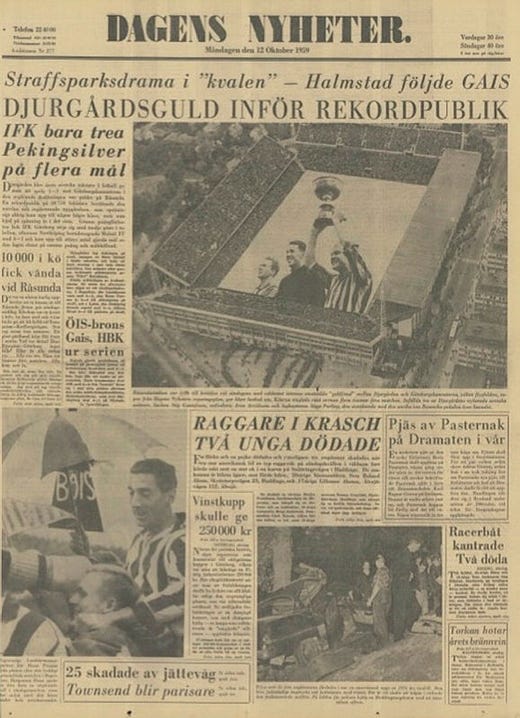
He compared it to IFK Malmö who were known for the same “boring style”.
But DN’s Bobby Byström thought the first half was the best football he had seen from Brazil against the Soviet Union in the World Cup.
The 1959 season ended on October 11 with a long queue outside Råsunda. Three teams had a chance to win the series in the last round, Djurgården did so after 1–1 against IFK Göteborg.
“The weather was grey, with occasional glimpses of sunshine. People came in leather jackets and Icelandic sweaters. They had bags and cases of thermos coffee and sandwiches in long lines. The sausage men were shot this Sunday,” wrote SvD.
The figure of the audience 50,750, “but then the office would have to deal with almost two thousand free permit holders”, according to DN, who wrote that 10,000 were allowed to go home without a ticket, among other things because they did not people gathering together.
“What we can’t do, as a country, is full pack football.”
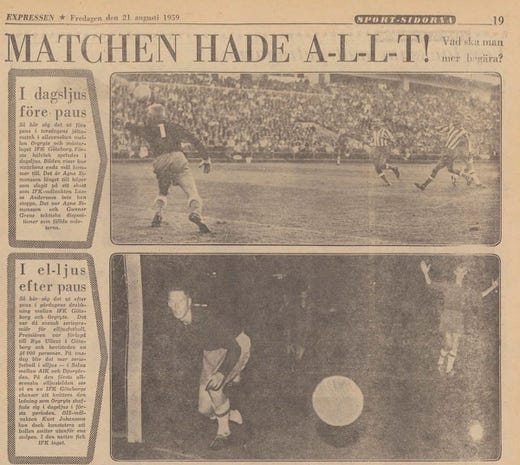
A “young, smelly man” who stood at the most expensive gate already at seven in the morning was first in line, according to SvD. “He had a travel radio and a vest pocket chess. From time to time he sent a French far away. “
A young woman he was injured in the game. When Gothenburg supporters threw hard objects at a placard held up by zookeepers, she turned around, and got something thrown in her eye. Probably a nut, according to SvD. She was taken to Karolinska, who told the media that she might lose the sight in her eye.
Princess Desirée was at the game, and “laughing with fun behind the crown clothes at the sweaty companions, wrote SvD.
Desirée had been granted permanent membership in Djurgården by the board, according to DN. Her sister Birgitta, who was a member of the Djurgården slalom division, was in Germany but she “requested that a telegram be sent about the result of Sunday’s match at Råsunda, a request that was indeed granted” .
Read more:
They are working for AIK to break the Scandinavian audience record
Public success in the Allsvenskan – several clubs record the highest numbers
2024-11-10 10:42:00
#Pillow #wars #fish #hides #50s #attendance #record #football #stands


